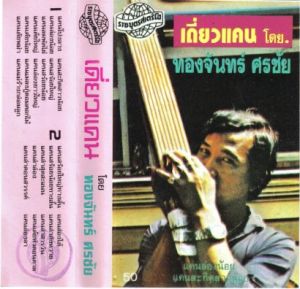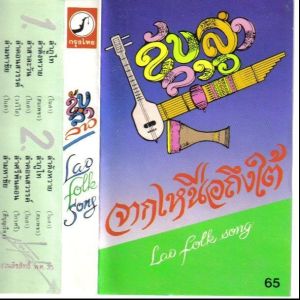Laos – Kaen Solo Pieces
February 12, 2010
This is a tape I bought in Luang Prabang, Laos, in October 1996. The pieces are all solo performances on the kaen, which is a bamboo free-reed mouth organ considered to be the national instrument of Laos and a symbol of Lao identity. The different regional styles of kaen playing are discerned by the rhythms used in the phrasing, and traditional folk melodies are used as a springboard for complex improvisations in each piece. Unfortunately, this instrument is rapidly being replaced by cheesy electronic keyboards in Lao music, a trend that will hopefully see a reversal soon.
“Lao Folk Song”
January 13, 2010
Bought at a shop in Van Vieng, Laos in 1996. Lao folk music, which can be heard in Northeast Thailand as well, is based around vocal singing and storytelling accompanied by the Kaen (a bamboo free-reed mouth organ, varieties of which are found throughout Southeast and East Asia). The production on this is pretty terrible, with tons of drum machines and keyboards cheesing everything up, but I still find it quite enjoyable. You can hear the Kaen in most of the songs on this cassette although it might be buried in the mix, and the keyboard and guitar (actually, it’s an electrified 2-string lute) lines mimic that of the Kaen. The vocals are the main draw here for me, the ornamentations and octave leaps are absolutely thrilling. Lao is a tonal language (as are most of the languages in Southeast Asia once you get north of Malaysia) and as I understand, the melodies are sung in accordance with the pronunciation rules for each word (for example, the falling tone that distinguishes one word from another similar word will be incorporated into the melody of a song to keep the meaning of the lyrics intact). In fact, there are instrumental forms of music in the region used for ritual purposes in which the instrument’s melody line will follow the articulations of speech to communicate a specific idea or meaning, even when there are no lyrics at all. So a certain melody, played a certain way, can communicate specific instructions to deceased relatives regarding the best way to find one’s path through the afterlife, for example. The way the songs are structured is really interesting to me as well, as the lyrics seem to dictate the length of each measure so the lines stop and start in unexpected places. I hear some parallels between this and the West African “desert blues” of Tinariwen and Etran Finatawa that has become popular internationally – everything’s pentatonic, lots of hypnotic repetition, almost a blues feeling to it (to my ears).

